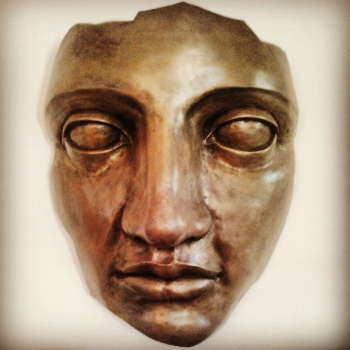
King Arthur: The Truth Behind the Legend
by Rodney Castleden.
Routledge, 1999.
Rodney Castleden is well known as an investigator into prehistoric enigmas such as the Minoan civilisation, Neolithic Britons and giant hill figures, and has here turned his attention to Arthur.
As expected, this is a widely researched book burrowing into scholarly literature, archaeological reports, fringe theories and texts both ancient and modern. There are photos of relevant sites and a generous helping of detailed maps, plans and figures mostly by the author himself (though, disappointingly, three illustrations by the present reviewer are uncredited and unacknowledged) and the whole is attractively laid out.
There are also a few typos, some of which didn’t seem to have been corrected for the paperback edition, but these don’t detract too much.

After setting the scene Castleden plunges into an examination of the nature of the available early documentation and what is known of the archaeology of post-Roman Britain; he then outlines the historical context before turning his gaze on the man himself, his possible power bases and his disappearance.
It won’t be giving too much away to say that he plumps for a West Country setting for Arthur, but that he places his demise and burial far away from Glastonbury and not at any of the expected sites.
Though mostly based on plausibility, this is a frankly speculative work. In a wide-ranging and difficult area such as Arthurian period research it is impossible to be sure about most so-called facts, the only certainty being that most of the evidence remains at best ambiguous or at worst doubtful. Castleden builds possible scenarios upon attractive hypotheses, and this is fair enough, but the whole fails to persuade. Consciously planned as a successor to the late John Morris’ The Age of Arthur, this book falls victim to the same assumptions about the reliability of medieval texts, despite a fair amount of critical appraisal.
The author is unfailingly polite to recent-ish theories that Arthur was Owain Ddantwyn, Athrwys or Arthmael, or that he was located exclusively in Wales or Scotland, and equally politely rejects them. I think however that there is not enough discussion of the Arthurian placename and folklore evidence from outside his favoured location of the Dumnonian peninsula, nor of the forms and distribution of the name Arthur in place and time, nor of any influence that mythic archetypes may have had on the development of the Arthurian legend. Nor am I convinced by the attempts to account for the anachronistic name Camelot, anvil-shaped stones and the like as support for his historical reconstruction. And I think the problems of chronology thrown up by the probably irreconcilable dates of the Anglo-Saxon Chronicle (from the 9th century onwards) and the 10th-century Welsh Annals are too easily skated over.
There are a few other blemishes which suggest a hack-journalist approach to his material; for example, Bede never mentions Camlann (as Castleden claims on page 107), and a previously unknown 10th-century document, ‘Some of King Arthur’s Wonderful Men’ (page 317), is actually a modern title included in A Celtic Miscellany, chosen by K H Jackson for a Penguin title and given to a translation of an excerpt from the Welsh tale Culhwch ac Olwen.
While Castleden has made a bold attempt to locate and give substance to the best known of the insular Dark Age figures, this is nevertheless a misguided exercise in updating John Morris’ 1973 work The Age of Arthur for a new generation. King Arthur: the truth behind the legend (the title itself smacks of hubris) is based on poor research, unwarranted assumptions and a misplaced confidence in outdated theories. His supposed grave of Arthur, while interesting in itself as an example of a high status Early Medieval burial site, rests on no evidence other than nearness of date, as neither documentary nor archaeological justification exists let alone a vague local tradition (the usual standby in such claims).
The best things about it are the attractive quality of the illustrations and the summaries in the opening chapters.
Repost, slightly revised, of a review first published in the Journal of the Pendragon Society in 1999 and then on my Calmgrove blog on 11th September, 2012

